 Weird Stuff
Weird Stuff  Weird Stuff
Weird Stuff  Our World
Our World 10 Ways Your Christmas Tree Is More Lit Than You Think
 Movies and TV
Movies and TV The 10 Coolest Stars to Set Sail on The Love Boat
 History
History 10 Things You Didn’t Know About the American National Anthem
 Technology
Technology Top 10 Everyday Tech Buzzwords That Hide a Darker Past
 Humans
Humans 10 Everyday Human Behaviors That Are Actually Survival Instincts
 Animals
Animals 10 Animals That Humiliated and Harmed Historical Leaders
 History
History 10 Most Influential Protests in Modern History
 Creepy
Creepy 10 More Representations of Death from Myth, Legend, and Folktale
 Technology
Technology 10 Scientific Breakthroughs of 2025 That’ll Change Everything
 Weird Stuff
Weird Stuff Ten Bizarre Facts About The Doge Meme
 Our World
Our World 10 Ways Your Christmas Tree Is More Lit Than You Think
 Movies and TV
Movies and TV The 10 Coolest Stars to Set Sail on The Love Boat
Who's Behind Listverse?

Jamie Frater
Head Editor
Jamie founded Listverse due to an insatiable desire to share fascinating, obscure, and bizarre facts. He has been a guest speaker on numerous national radio and television stations and is a five time published author.
More About Us History
History 10 Things You Didn’t Know About the American National Anthem
 Technology
Technology Top 10 Everyday Tech Buzzwords That Hide a Darker Past
 Humans
Humans 10 Everyday Human Behaviors That Are Actually Survival Instincts
 Animals
Animals 10 Animals That Humiliated and Harmed Historical Leaders
 History
History 10 Most Influential Protests in Modern History
 Creepy
Creepy 10 More Representations of Death from Myth, Legend, and Folktale
 Technology
Technology 10 Scientific Breakthroughs of 2025 That’ll Change Everything
10 Amazing And Successful Military Deception Operations
Deception operations have been employed in warfare throughout history, with the earliest mentions being in works like Virgil’s Aeneid describing the Trojan Horse during the Trojan War. The Greeks invented smokescreens for use during the Peloponnesian War, and there are countless other examples of deception tactics that have both worked and failed. This list comprises some of the more important uses of deception that successfully tricked the enemy throughout the history of warfare.
10 Maskirovka
Russia, Battle Of Kursk, World War II
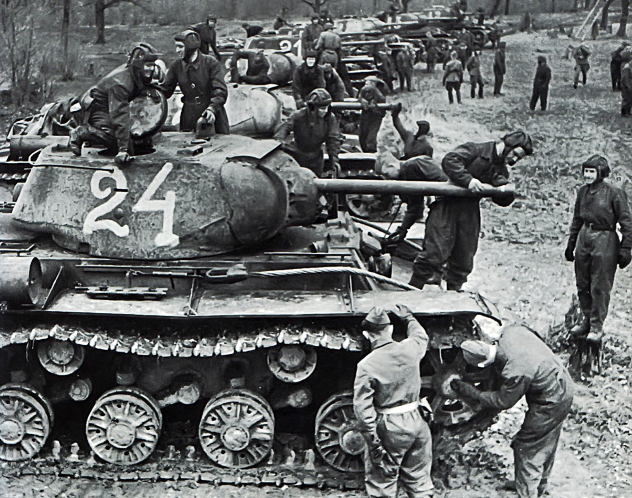
Maskirovka is a broad military doctrine of Soviet deception developed throughout the early 20th century. Its primary focus is denial, deception, and surprise. The practice utilizes several means of fooling the enemy, ideally suggesting to them that a smaller force is awaiting them “over the hill.”
It was most successfully employed at the Battle of Kursk during World War II, when a relatively large force of Germans unwittingly attacked what they believed to be a small force of Russian troops, which actually numbered more than four times their own. The Russian forces were able to achieve this, in part, by spreading rumors throughout their own ranks as to their capabilities and strength, which spread to the Germans through their counterintelligence collection means. Ammunition and supplies were moved only under the cover of darkness, while camouflage was utilized to conceal anything of military value. Additionally, the Soviets employed fake airfields, which enticed the Germans to bomb dummy aircraft, further confusing their assessment of the Soviet military strength and capabilities.
Prior to the battle, the Germans underestimated the Russians’ strength, thinking that they had fewer than 1,500 tanks and 400,000 men ready to fight. Unfortunately for German intelligence, the Russians’ deception worked, and they confronted more than 1.3 million fighting men, more than twice the estimated number of tanks, and nearly 3,000 aircraft. The resulting battle destroyed the German offensive and earned the Soviets their first victory against the Germans along the Eastern Front. For the remainder of the war, the Germans would be on the defensive all the way to Berlin.
The doctrine is still being used, most recently in the annexation of the Crimean Peninsula and the taking of Eastern Ukraine.
9 Bluffing
England, Battle Of Fishguard, War Of The First Coalition
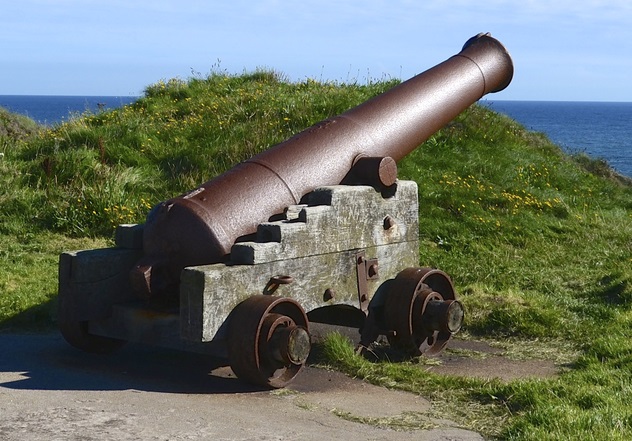
In 1797, during what has been called “The Last Invasion of Britain,” French Revolutionary forces crossed the North Sea and faced the British at the Battle of Fishguard, which wasn’t really a battle at all. Having previously landed successfully a few miles west of Fishguard with nearly 20 boatloads of troops, 47 barrels of powder, and 50 tons of cartridges and grenades, the French were ready to take the town.
France’s Commodore Castagnier sent a single French ship to reconnoiter the bay while flying the British colors. As soon as the ship was spotted by the British, they fired a single blank from a 9-lb gun. While the port had eight of these large cannons, they were severely understocked and had only three rounds. The French ship immediately hoisted the French colors and fled the bay. The British may have fired the cannon to signal the ship in some way, but regardless of their intention, they caused the French to reconsider their target and turn away from Fishguard. Had they not fired the initial blank to bluff the French scout ship, the port would likely have been taken.
8 Trojan Coffin
The Normans, Castle Siege

Many stories of the fabled 11th-century Norwegian King Harald Hardrada have been told throughout the years, detailing his bravery and ingenuity at combat. During his conquest on the road to becoming the king of Norway, Harald laid siege to an unnamed castle by camping outside and establishing his men for the upcoming battle. He also had erected a small tent a ways outside the main camp, where he lay sick and possibly dying. Before any battle took place, it was reported that the great king had perished from his illness, and his men ventured toward the castle to tell the news of their commander’s demise. They addressed a large gathering of priests and requested that they allow their fallen commander to be buried within the city.
The priests believed that they would receive rich gifts for accommodating the bereaved fighting men and acquiesced. They formed a large procession and took Harald’s ornate coffin into their castle, along with a small group of his men. Once they’d crossed the threshold and entered the castle grounds, Harald’s men immediately barred the gate, called the remaining men to battle, and the good King Harald himself leaped from the coffin and declared that everyone be killed. The castle was taken, and Harald’s legendary exploits continued toward the conquest of England.
7 Elaborate Hoax
Union Army, Reclamation Of The Indianola, US Civil War
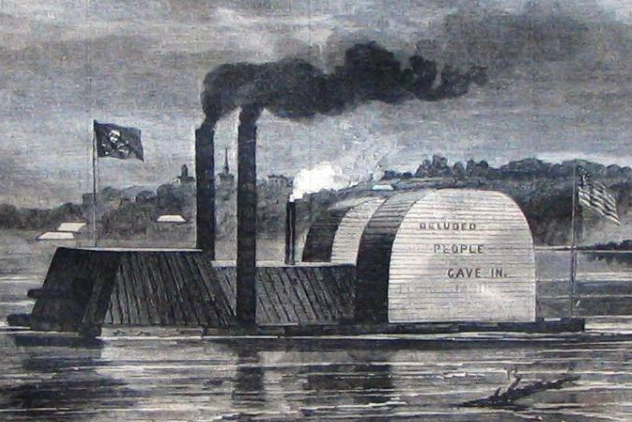
After losing one of its most prized ships, the recently constructed ironclad USS Indianola, the Union Navy conducted the most successful hoax operation of the US Civil War. The Indianola was a considerably formidable vessel, though it was plagued with problems during its construction, and it saw several successful combat operations.
Attempting to pass the city of Vicksburg, the ship engaged in a battle against the Confederate Webb, which rammed the vessel, causing its starboard wheel and rudder to become inoperable. As the ship began to take on water, its captain, Lieutenant Commander George Brown, ordered it run ashore, where he quickly dumped the Union codebooks and surrendered to prevent a greater loss of life. The Confederates moved the Indianola to the eastern bank of the Mississippi and established a 100-man salvage crew accompanied by two pieces of field artillery in an attempt to salvage the valuable vessel.
Deciding to attempt a recovery operation, Rear Admiral David D. Porter ordered that an old coal barge be made to look like a larger ironclad intent on taking the Confederates: “It was built of old boards in twelve hours, with porkbarrels on top of each other for smoke-stacks, and two old canoes for quarter-boats; her furnaces were built of mud, and only intended to make black smoke and not steam. Painted on the side was the taunting slogan: ‘Deluded Rebels, cave in!‘ ” To ensure that the Confederates saw the vessel approaching, he launched it in broad daylight toward the Confederate defenses.
Seeing the “formidable vessel” approaching, the salvage crew first attempted to raise the Indianola before finally deciding to blow its magazines, scuttling the ship. The Indianola was eventually resurfaced and returned to the North toward the end of the war.
6 Fraudulent Document
Sultan Baybars, Capture Of Krak Des Chevaliers, The Crusades

Sometimes all it takes is a well-executed bluff to confuse and capture the enemy. During the Crusades, following more than a year of what can only be described as a peaceful siege, wherein Sultan Baybars’s (also spelled Baibars) army camped outside the castle of Krak des Chevaliers, using its resources without engaging, the time had come to engage the formidable fortress.
The castle was built to withstand long sieges. Its fortifications were almost twice the size of that of some European castles, and it featured a large moat, high walls, and a gate accessible only by a long, winding passage. While the sultan had a superior fighting force, which had successfully stood against the Mongols and won, the Hospitaller stronghold had the advantage of fortitude, and the fight would certainly be a bloody and costly one. Knowing this, Sultan Baybars, who by all accounts was a brilliant tactician, retreated and devised a plan that involved a single sheet of paper.
Baybars finally got to implement his plan in the most spectacular way in 1271 during the Eighth Crusade, when he delivered a letter to his enemy—from his enemy. After a ten-day siege that took down a portion of the outer wall of the castle, a letter drafted from the leader of the Hospitaller ordered the men inside the castle to surrender. The knights immediately capitulated and followed the orders of their leader by sending a party out to meet the sultan and arrange conditions for their surrender. The deception worked, and the castle was taken without the need for further siege or bloodshed, all due to a falsified signature at the bottom of a piece of paper.
5 Feigned Retreat
The Normans, Battle Of Hastings, Norman Conquest
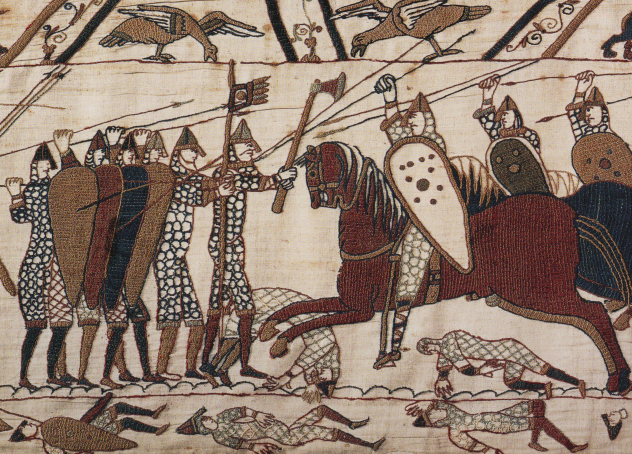
The Norman Conquest of England in 1066 is a hotly debated battle in many historical circles. There is no consensus as to whether William II of Normandy, later called William the Conqueror, initiated a feigned retreat or an actual one. Whether or not the decision to withdraw his cavalry was made by William to engage the British doesn’t matter when you consider that no other feigned retreat has been as successful before or since that battle nearly 1,000 years ago.
During the battle, the British shield wall was established by the best men available and continuously held the line against the onslaught of William’s cavalry until finally, the cavalry turned and fled. As they withdrew from the shield wall, the men holding the line broke and followed them in one of the biggest blunders in military history. As they engaged, the cavalry—now able to hold their ground against a sparse force without horses—quickly fell back on their pursuers and devastated their ranks. Simultaneously, the remaining forces were engaged, and due to their weakened lines, they were quickly destroyed. The successful feigned retreat by the cavalry won the battle and brought about the end of Anglo-Saxon rule in England.
4 Baiting An Attack
US Army, Vietnam War
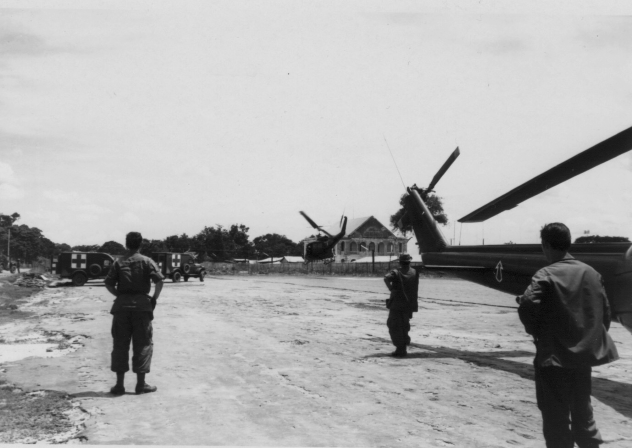
Oftentimes, the best deception operations are carried out due to accurate and timely intelligence that helps commanders to make decisions to thwart an enemy’s attack. Other times, this information has been used to bait an attack so that a counterattack can be implemented to achieve a positive result for the defensive force. This occurred during the Vietnam War, when the commanders of the 2nd Battalion, 27th Infantry Division, learned through intelligence that the North Vietnamese Army (NVA) and elements of the People’s Army of Vietnam (PAVN) were planning to attack an unnamed firebase as a test or probing operation.
Knowing this, the Americans established Diamond I Firebase 25 kilometers (16 mi) outside of Tay Ninh, an area that would make it enticing to attack. They placed ground sensors throughout the base and also reinforced it with a significant amount of artillery. The result: “Rather than the PAVN and NVA regiment having an easy battle, it was twice repulsed [and] suffered heavy casualties.” The attack took place on February 24, 1969, and cost the Vietnamese 118 soldiers and two captured.
3 Wolves In Sheep’s Clothing
British Royal Navy, World War I
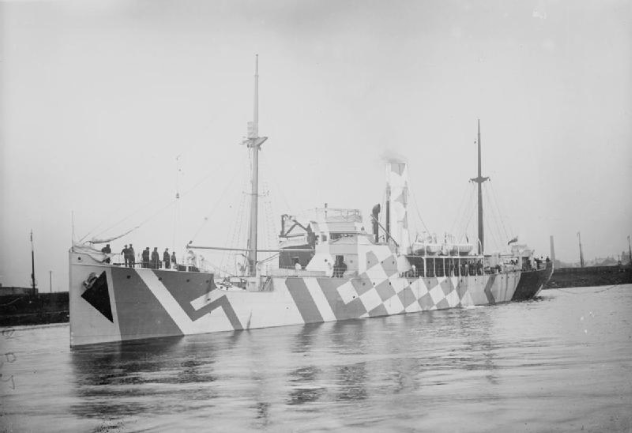
During World War I, the German Navy maintained a highly successful fleet of U-boats (aka Unterseeboots) that operated in the Atlantic Ocean. While submarines were technically invented and used as early as the US Civil War, they did not see widespread use in naval combat until 1914, and the Germans were quite adept at being sneaky under the sea. The biggest problem that a surface vessel faced during this time was a complete inability to locate a U-boat. Sonar was developed very early in the war, but it wasn’t anywhere near as effective or efficient as it is today, so navies like the British and French utilized hydrophones, which had a short range and weren’t very effective if a U-Boat’s crew was well-trained and quiet.
Because of this, Q-boats were established. These were heavily armed vessels of all sorts that were “dressed” as merchant ships. Their job was to sail the seas and entice the U-boats to surface and attack only to find that their “prey” was much more skilled at defense than they originally thought. To further sell the deception, the ships would fly false colors would be flown, and when a U-boat approached, part of the crew, known as the “panic party,” would appear to abandon the ship. Once the submarine was in range, hidden guns were revealed, the White Ensign (the flag of the Royal Navy) raised, and the U-boat was sunk.
The use of Q-boats led to the sinking of ten U-boats, so it was successful, although most of its success came by forcing Germany to completely change how it conducted naval warfare—albeit too late for them to effectively win the war.
2 Left Hook
US And Allied Forces, Operation Desert Storm

Operation Desert Storm saw one of the most successful uses of deception via radio signals ever employed in warfare. The Iraqis’ attention was on an amphibious training maneuver by the United States Marine Corps, leading them to strongly believe that the Americans would invade along their coastline. They subsequently prepared for this eventuality.
Additionally, the 18th and 5th Corps Headquarters began their maneuvers through the desert in a massive flanking maneuver known as a “left hook,” where they were able to effectively outflank the Iraqis and attack while also blocking any avenue of retreat back into Iraqi territory from Kuwait. During these maneuvers, the Corps’s signals units broadcasted mimicked signals, which effectively made the Iraqis believe that the units were completely stationary.
As the units continued to move toward the Iraqi lines, the Iraqi forces moved away from them toward the coastline in order to repel their invaders. The result was a ground war that lasted only three days and caused the Iraqis to completely withdraw from Iraqi-occupied Kuwait. Most of their army surrendered to the Americans and Allied troops who had cut off their escape. After 100 hours of combat on the ground, President Bush declared a cease-fire and the successful liberation of Kuwait on February 27, 1991.
1 False Flag
Germany, Operation Himmler, World War II
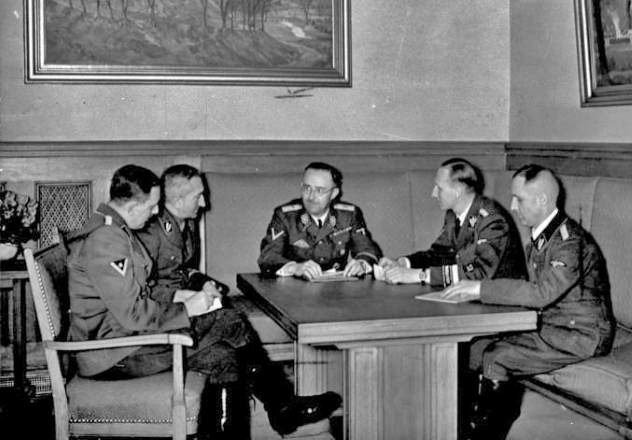
Following Germany’s successful expansion into the neighboring countries of Austria and Czechoslovakia in 1938 and 1939, Hitler needed to continue to create Lebensraum (“Living Space”) for his idealized expansion of Germany. Hitler knew that he couldn’t easily get away with such expansion into the likes of Poland without the rest of the world raising a eyebrow, so he devised a false flag operation to allow for his entrance into the bordering nation.
Along the border town of Gleiwitz, several Jews were taken from a concentration camp and dressed in German border guard uniforms. They were taken to a nearby radio tower in Germany and shot and killed just outside the border of Poland. This action, which could become known as the Gleiwitz incident, along with 20 other less serious matters, were then used by the fuhrer’s propaganda campaign to forward his cause to take Poland.
Hitler immediately cited Polish aggression and invaded Poland on September 1, 1939, saying, “This night for the first time Polish regular soldiers fired on our own territory. Since 5:45 AM, we have been returning the fire [ . . . ] I will continue this struggle, no matter against whom, until the safety of the Reich and its rights are secured.” While it is certainly true that German aggression was ongoing up to this point, the war can be said to have officially begun with the invasion of Poland, since two days following the attack, Great Britain and France declared war on Germany.
Jonathan is an amateur graphic artist, illustrator, and game designer with a few independently published games through his game company, TalkingBull Games. He enjoys researching and writing about history, science, theology, and many other subjects.








